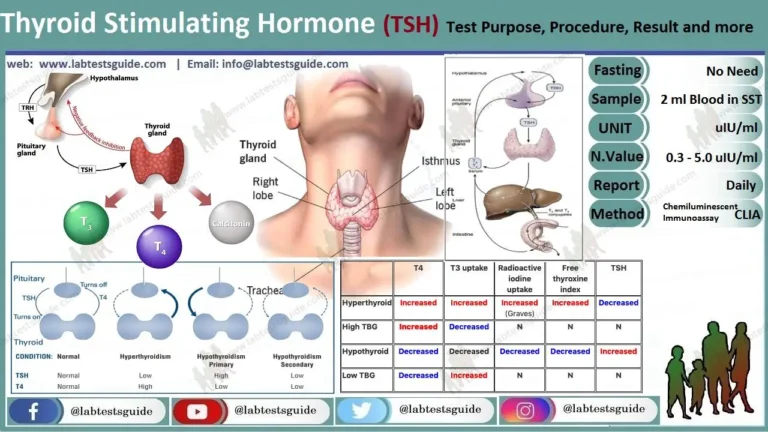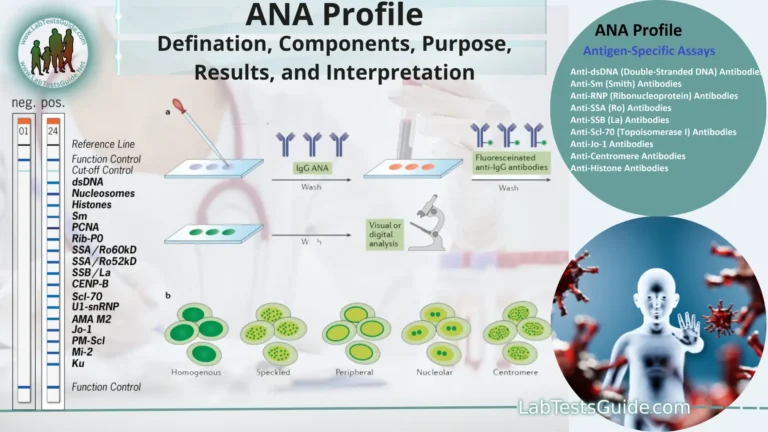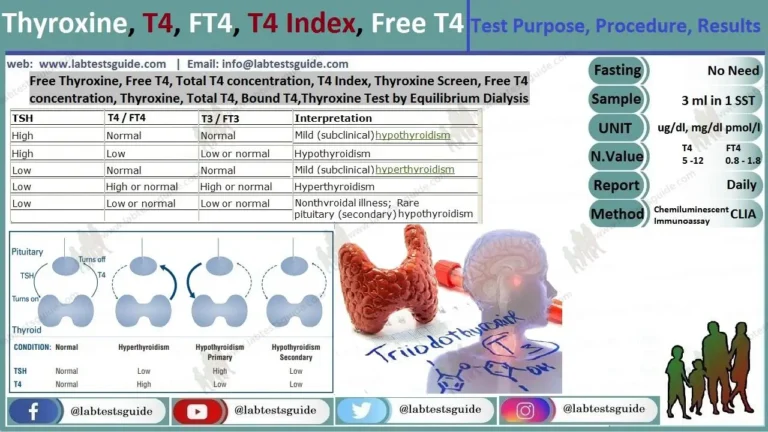4901 to 4950 MCQs for Lab Technician and Technologist Exam Preparation
5000 Plus MCQs for Lab Technician and Technologists are designed to test the knowledge and proficiency of laboratory professionals who work in the field of clinical laboratory science. These questions cover a wide range of topics related to laboratory science, including anatomy, physiology, microbiology, chemistry, and hematology.

If You like then share this to your friends and other social media.
If You have any question and suggestions then please Contact us Here
Questions 4901 to 4950
- In mammalian tissues serine can be a biosynthetic precursor of
- Methionine
- Glycine✔
- Tryptophan
- Phenylalanine
- A vasodilating compound is produced by the decarboxylation of the amino acid:
- Arginine
- Aspartic acid
- Glutamine
- Histidine✔
- Biuret reaction is specific for
- –CONH-linkages✔
- –CSNH2 group
- –(NH)NH2 group
- All of these
- Sakaguchi’s reaction is specific for
- Tyrosine
- Proline
- Arginine✔
- Cysteine
- Million-Nasse’s reaction is specific for the amino acid:
- Tryptophan
- Tyrosine✔
- Phenylalanine
- Arginine
- Ninhydrin with evolution of CO2 forms a blue complex with
- Peptide bond
- α-Amino acids✔
- Serotonin
- Histamine
- The most of the ultraviolet absorption of proteins above 240 nm is due to their content of
- Tryptophan✔
- Aspartate
- Glutamate
- Alanine
- Which of the following is a dipeptide?
- Anserine✔
- Glutathione
- Glucagon
- β -Lipoprotein
- Which of the following is a tripeptide?
- Anserine
- Oxytocin
- Glutathione✔
- Kallidin
- A peptide which acts as potent smooth muscle hypotensive agent is
- Glutathione
- Bradykinin✔
- Tryocidine
- Gramicidin-s
- A tripeptide functioning as an important reducing agent in the tissues is
- Bradykinin
- Kallidin
- Tyrocidin
- Glutathione✔
- An example of metalloprotein is
- Casein
- Ceruloplasmin✔
- Gelatin
- Salmine
- Carbonic anhydrase is an example of
- Lipoprotein
- Phosphoprotein
- Metalloprotein✔
- Chromoprotein
- An example of chromoprotein is
- Hemoglobin✔
- Sturine
- Nuclein
- Gliadin
- An example of scleroprotein is
- Zein
- Keratin✔
- Glutenin
- Ovoglobulin
- Casein, the milk protein is
- Nucleoprotein
- Chromoprotein
- Phosphoprotein✔
- Glycoprotein
- An example of phosphoprotein present in egg yolk is
- Ovoalbumin
- Ovoglobulin
- Ovovitellin✔
- Avidin
- A simple protein found in the nucleoproteins of the sperm is
- Prolamine
- Protamine✔
- Glutelin
- Globulin
- Histones are
- Identical to protamine
- Proteins rich in lysine and arginine✔
- Proteins with high molecular weight
- Insoluble in water and very dilute acids
- The protein present in hair is
- Keratin✔
- Elastin
- Myosin
- Tropocollagen
- The amino acid from which synthesis of the protein of hair keratin takes place is
- Alanine
- Methionine✔
- Proline
- Hydroxyproline
- In one molecule of albumin the number of amino acids is
- 510
- 590
- 610✔
- 650
- Plasma proteins which contain more than 4% hexosamine are
- Microglobulins
- Glycoproteins
- Mucoproteins✔
- Orosomucoids
- After re leas ing O2 at the tissues, hemoglobin transports
- CO2 and protons to the lungs✔
- O2 to the lungs
- CO2 and protons to the tissue
- Nutrients
- Ehlers-Danlos syndrome characterized by hypermobile joints and skin abnormalities is due to
- Abnormality in gene for procollagen✔
- Deficiency of lysyl oxidase
- Deficiency of prolyl hydroxylase
- Deficiency of lysyl hydroxylase
- Proteins are soluble in
- Anhydrous acetone
- Aqueous alcohol✔
- Anhydrous alcohol
- Benzene
- A cereal protein soluble in 70% alcohol but insoluble in water or salt solution is
- Glutelin
- Protamine
- Albumin
- Gliadin✔
- Many globular proteins are stable in solution inspite they lack in
- Disulphide bonds✔
- Hydrogen bonds
- Salt bonds
- Non polar bonds
- The hydrogen bonds between peptide linkages of a protein molecules are interfered by
- Guanidine✔
- Uric acid
- Oxalic acid
- Salicylic acid
- Globular proteins have completely folded, coiled polypeptide chain and the axial ratio (ratio of length to breadth) is
- Less than 10 and generally not greater than 3–4✔
- Generally 10
- Greater than 10 and generally 20
- Greater than 10
- Fibrous proteins have axial ratio
- Less than 10
- Less than 10 and generally not greater than 3–4
- Generally 10
- Greater than 10✔
- Each turn of α-helix contains the amino acid residues (number):
- 3.6✔
- 3.0
- 4.2
- 4.5
- Distance traveled per turn of α−helix in nm is
- 0.53
- 0.54✔
- 0.44
- 0.48
- Along the α-helix each amino acid residue advances in nm by
- 0.15✔
- 0.10
- 0.12
- 0.20
- The number of helices present in a collagen molecule is
- 1
- 2
- 3✔
- 4
- In proteins the α-helix and β-pleated sheet are examples of
- Primary structure
- Secondary structure✔
- Tertiary structure
- Quaternary structure
- The a-helix of proteins is
- A pleated structure
- Made periodic by disulphide bridges
- A non-periodic structure
- Stabilised by hydrogen bonds between NH and CO groups of the main chain✔
- At the lowest energy level α-helix of polypeptide chain is stabilised
- By hydrogen bonds formed between the H of peptide N and the carbonyl O of the residue✔
- Disulphide bonds
- Non polar bonds
- Ester bonds
- Both α-helix and β-pleated sheet conformation of proteins were proposed by
- Watson and Crick
- Pauling and Corey✔
- Waugh and King
- Y.S.Rao
- The primary structure of fibroin, the principal protein of silk worm fibres consists almost entirely of
- Glycine✔
- Aspartate
- Keratin
- Tryptophan
- Tertiary structure of a protein describes
- The order of amino acids
- Location of disulphide bonds
- Loop regions of proteins
- The ways of protein folding✔
- In a protein molecule the disulphide bond is not broken by
- Reduction
- Oxidation
- Denaturation
- X-ray diffraction✔
- The technique for purification of proteins that can be made specific for a given protein is
- Gel filtration chromotography
- Ion exchange chromatography
- Electrophoresis
- Affinity chromatography✔
- Denaturation of proteins results in
- Disruption of primary structure
- Breakdown of peptide bonds
- Destruction of hydrogen bonds✔
- Irreversible changes in the molecule
- Ceruloplasmin is
- α1-globulin
- α2-globulin✔
- β-globulin
- None of these
- The lipoprotein with the fastest electrophoretic mobility and the lowest triglyceride content is
- Chylomicron
- VLDL
- IDL
- HDL✔
- The lipoprotein associated with activation of LCAT is
- HDL✔
- LDL
- VLDL
- IDL
- The apolipoprotein which acts as activator of LCAT is
- A-I✔
- A-IV
- C-II
- D
- The apolipoprotein which acts as actiator of extrahepatic lipoprotein is
- Apo-A
- Apo-B
- Apo-C✔
- Apo-D
- The apolipoprotein which forms the integral component of chylomicron is
- B-100
- B-48✔
- C
- D
The questions are typically designed to assess the technical skills and knowledge required for the laboratory profession, including the ability to analyze laboratory test results, perform laboratory procedures, and maintain laboratory equipment.
To prepare for these MCQs, candidates should have a thorough understanding of the key concepts and principles of laboratory science. They should also be familiar with common laboratory equipment and procedures, as well as laboratory safety protocols.
Candidates may also benefit from studying specific laboratory science textbooks or taking online courses that cover the material tested in the MCQs. Additionally, practicing sample MCQs and reviewing the answers can help candidates identify areas where they may need to improve their knowledge or skills.
Overall, the MCQs for lab technologists are designed to be challenging and comprehensive, requiring candidates to demonstrate a high level of proficiency in the field of laboratory science.
Possible References Used







